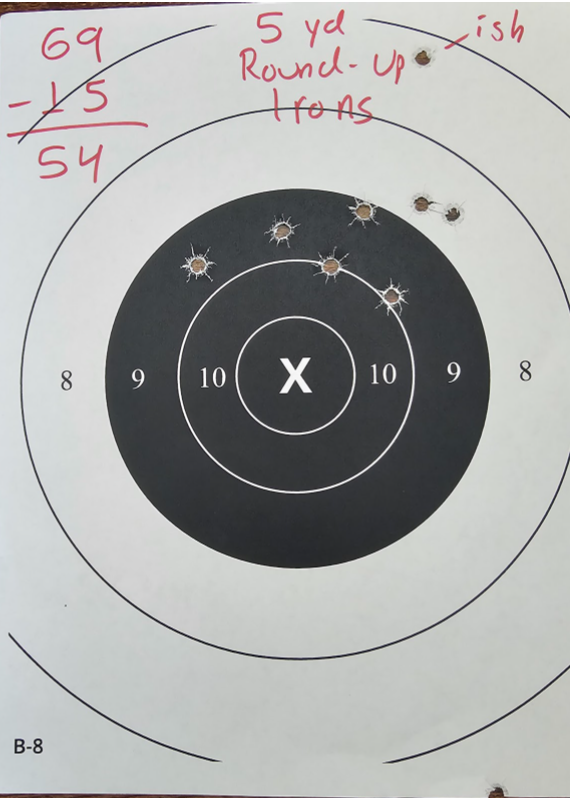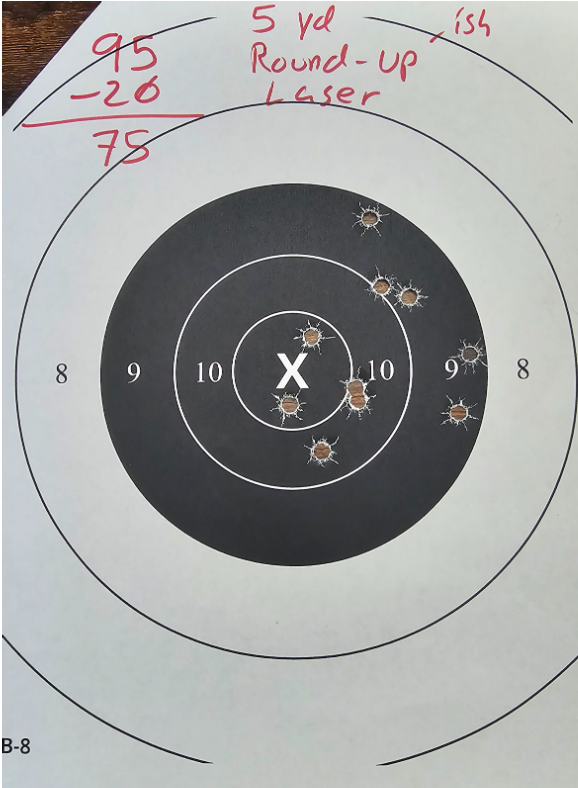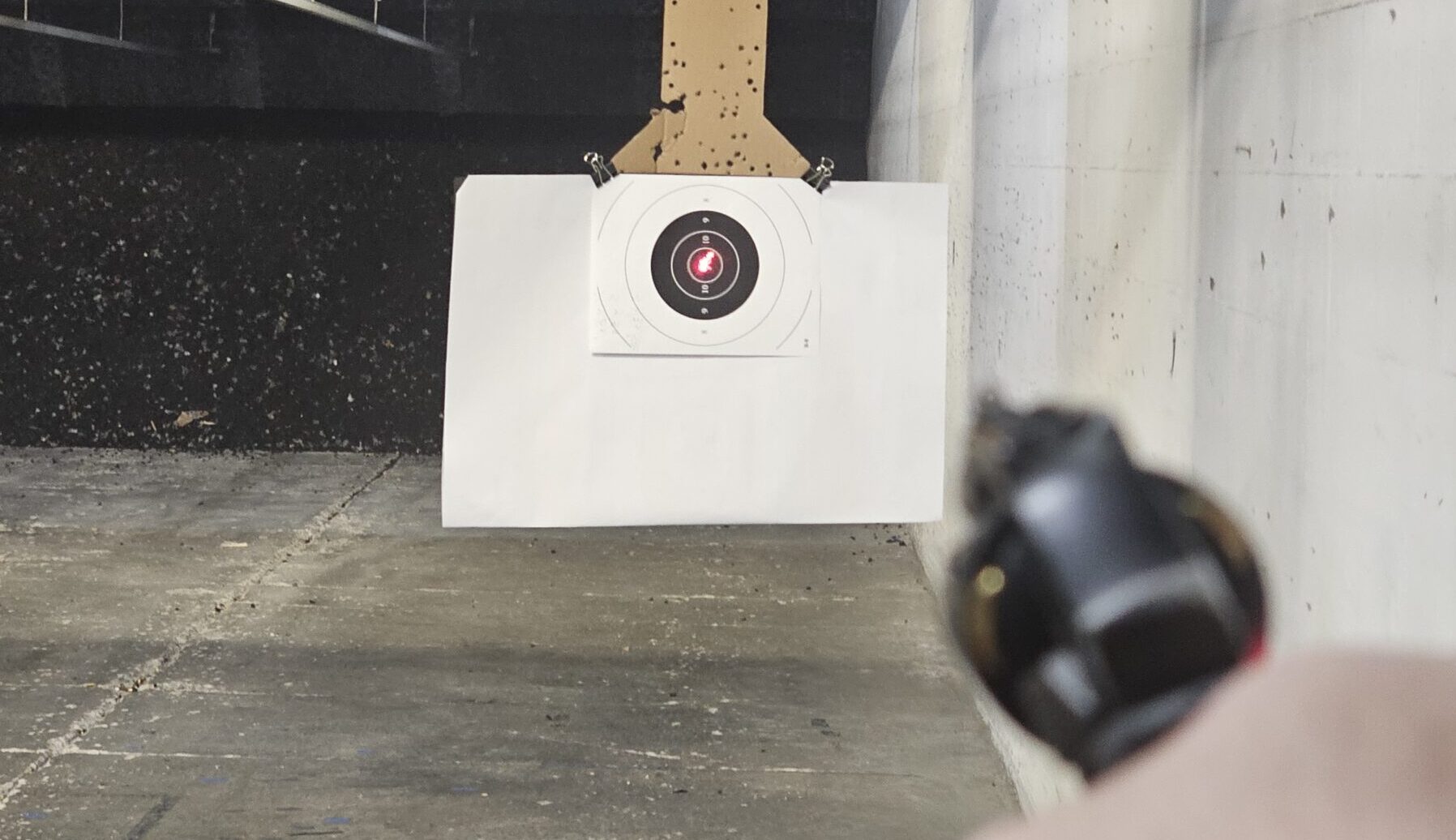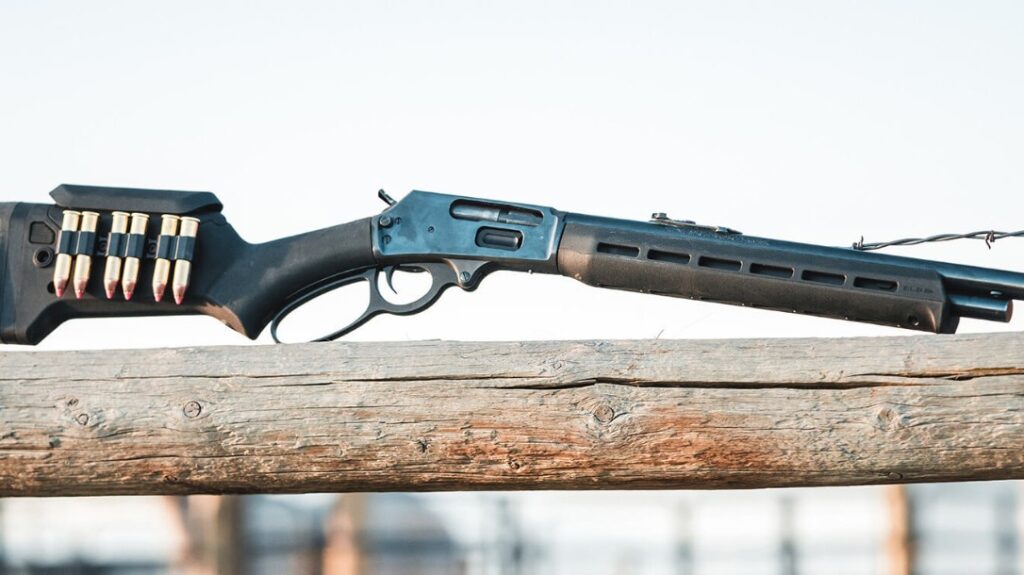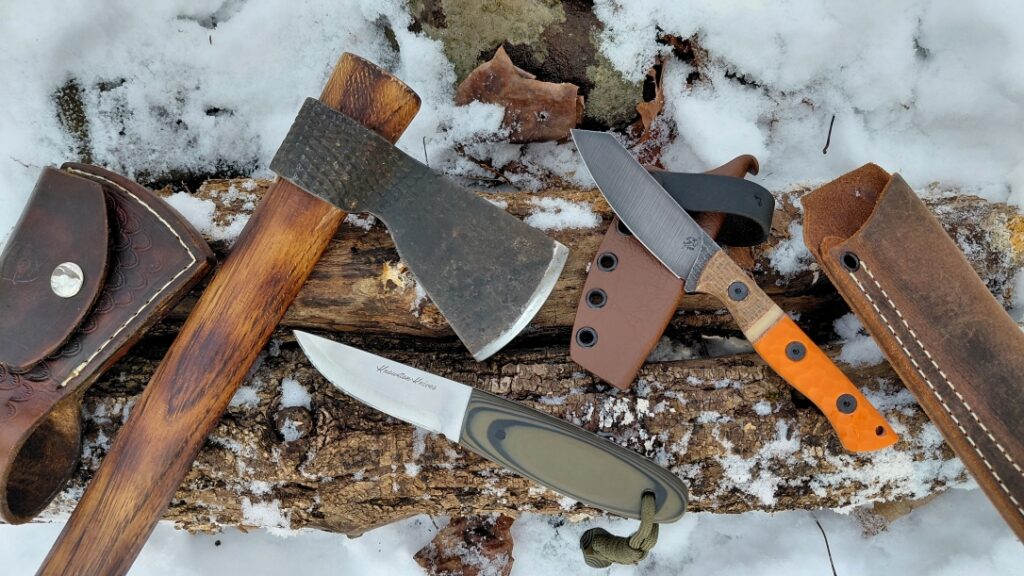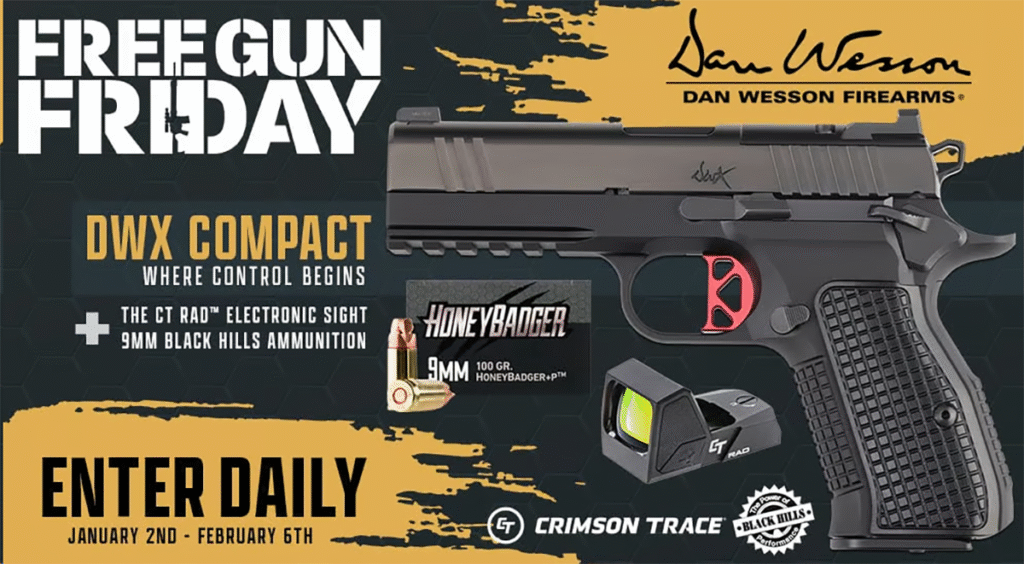Eye on the Prize: Laser Sights
Since the inception of handheld firearms, we’ve been on a constant journey to make them more user-friendly, especially when it comes to aiming.
While there were a few stutter-steps in the early 1900s, thanks to a combination of influences (“Jelly” Bryce’s superhuman vision and hammer spurs that obstructed the rear sight in double action being two big contributing factors), the 20th Century saw arguably the biggest advancements in pistol-sight development.
Serious shooters began putting target sights on their sidearms, then improving the contrast with gold or brass beads, high-visibility paint or inserts, and even radioactive material! I mean, why not? The legendary Rolex Milsub and many other battlefield instruments had been using Radium to improve low-light legibility for years.
Advertisement — Continue Reading Below
Trijicon stakes claim to the first tritium pistol sights in 1985, and a decade later, Crimson Trace comes on the scene. There had certainly been other attempts to attach lasers to pistols (Laser Products Corporation predates CT by almost 20 years). However, the laser grip made it dramatically easier to have a laser sight on a carryable sidearm.
Around roughly the same time (late 90s), Kelly McCann had been experimenting with miniaturized red dots mounted to pistol slides for, shall we say, “social use,” and one of his DVDs from the early 2000s.
Much like the minidisc player’s introduction right before the release of the first iPod, laser sights seem to have been almost entirely eclipsed by pistol-mounted optics in the current defensive pistol zeitgeist.
Advertisement — Continue Reading Below
Why A Laser?
The question arises, though: what if you’re dealing with a pistol that isn’t/can’t be readily configured to accept a PMO?
In an ideal world, with limitless budgets, the simple answer would be to buy the optimal tool that’s best suited for the intended role.
Sadly, we live in a world of bills and budgets, and cash doesn’t flow freely from our faucets. Sometimes a user is better served optimizing what they already have.
Advertisement — Continue Reading Below
Who’s A Candidate for Laser Surgery?
So, where do laser sights still make sense?
I’m of the opinion that if the pistol in question has crappy, fixed iron sights that cannot be easily upgraded (my preference being an all-black rear and a high-visibility front, ideally fiber optic), then this is a likely candidate for laser augmentation.
The Ruger LCP was one of the top-selling concealed carry handguns from its release at the 2008 SHOT Show until it was supplanted by the Sig P365 series a decade later (according to the GunGenius.com reports). Prior to that, the most ubiquitous pocket gun was arguably the Smith & Wesson J-Frame.
Advertisement — Continue Reading Below
Neither of these pistols has great sights, nor are they easily upgraded.
So, let’s see what the benefits of a laser would actually be.
Pepsi Challenge:
For testing purposes, I’m using my Smith & Wesson M&P 340. It comes from the factory with a high-visibility XS front sight. So, presumably, the delta in performance should be less than that of the traditional ramp sight of the 642/442.
Advertisement — Continue Reading Below
I shot 2 drills: Justin Dyal’s The 5-Yard Roundup and the Snubby Super Test from Hardwired Tactical Shooting.
My scores on the Super Test were only 3 points apart, including a complete miss when I ran it with the laser! (128/150 & 126/150 respectively)
The delta on the 5-Yard Round-Up was much more dramatic (54/100 vs. 75/100). I blew literally ALL the par times. Turns out that trying to shoot a 12# DA trigger, weak-handed, on the clock is quite the endeavor. Who knew?
My score improved by 28% when I shot with the laser vs. iron sights.
Advertisement — Continue Reading Below
What Does It All Mean?
At 10 yards on the Super Test, it was much more challenging to keep the laser in the black of the B8 while managing that trigger, and that’s where I dropped a shot.
For both drills, inside 5 yards, the laser gave me effectively the same benefit as the MRDS does on my Glock 19. It required considerably less “RAM” for me to recognize the acceptable alignment and break the shot, even with the benefit of iron sights that are a dramatic improvement over what comes stock on most small revolvers & semiautos.
Advertisement — Continue Reading Below
It felt much easier getting back on target, especially one-handed, with the laser compared to iron sights.
I think it’s important to note that these were the first live rounds I’ve fired from a laser-equipped pistol. While I do have a considerable amount of handgun training and shot a handful of matches, I don’t spend a lot of time with DA guns.
My performance and experience won’t be a 1:1 correlation for a novice shooter considering adding a laser to their newly acquired CCW for the first time. However, there are some potential performance gains to be had.
Just as with anything, there is no free lunch. Adding a laser won’t make you a better shooter, and there are absolutely some drawbacks to account for (battery life, having to re-zero each time the battery is changed, and the concern of zero-retention after an impact to the exposed sighting system). However, if the user is willing to assume those responsibilities, then it could be a less expensive way to make their EDC more effective.
Advertisement — Continue Reading Below


